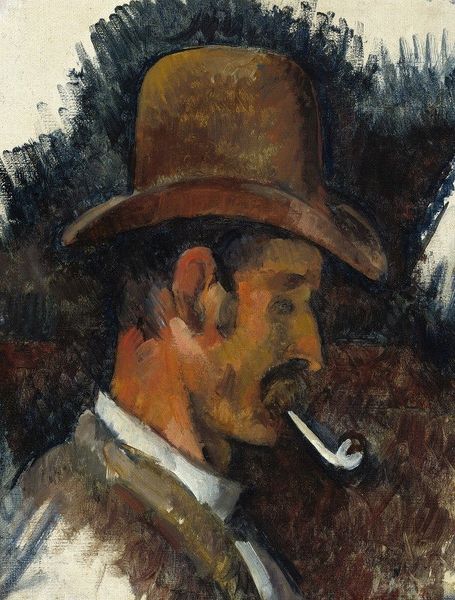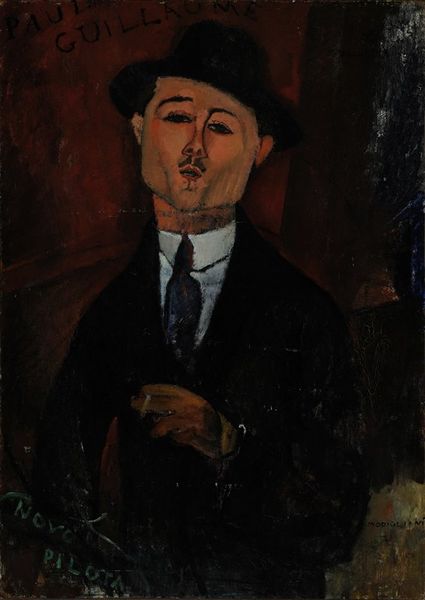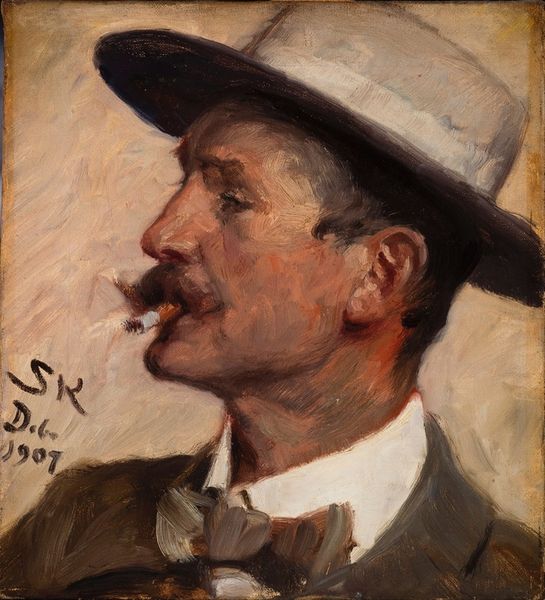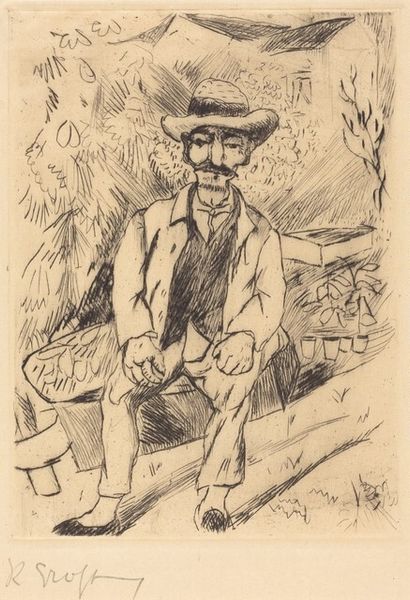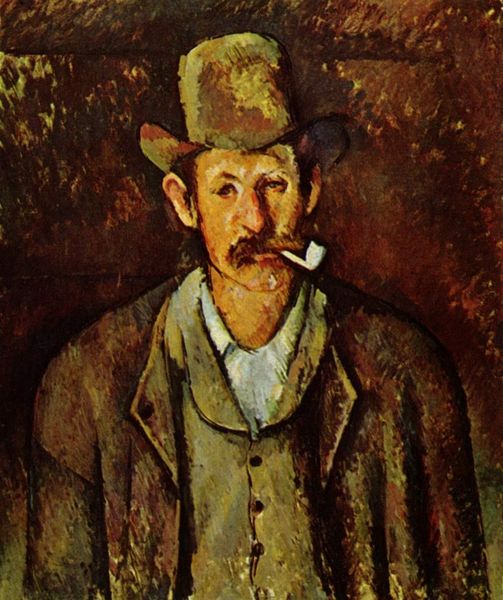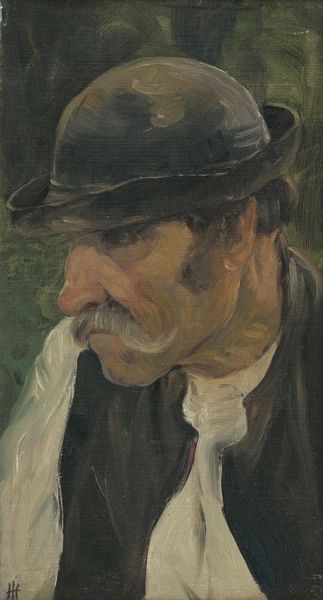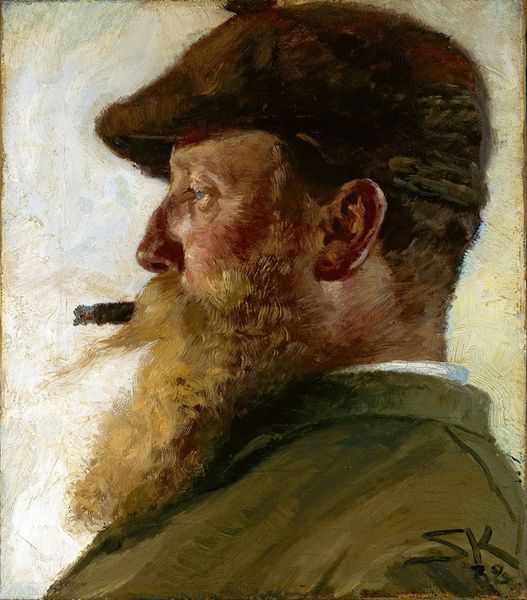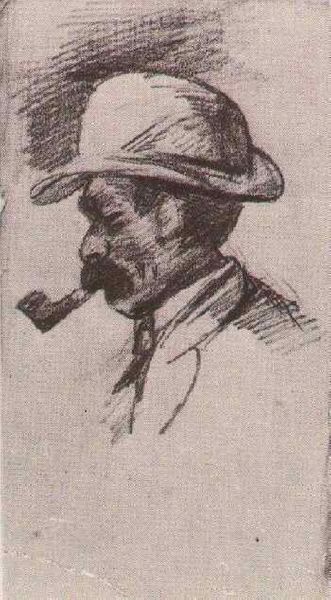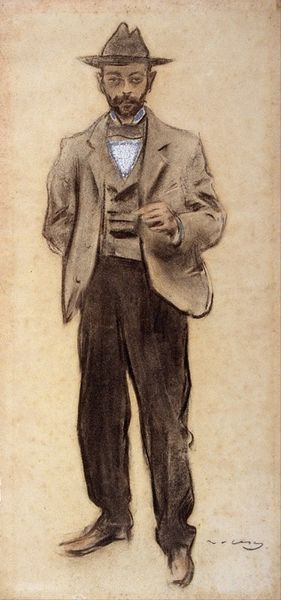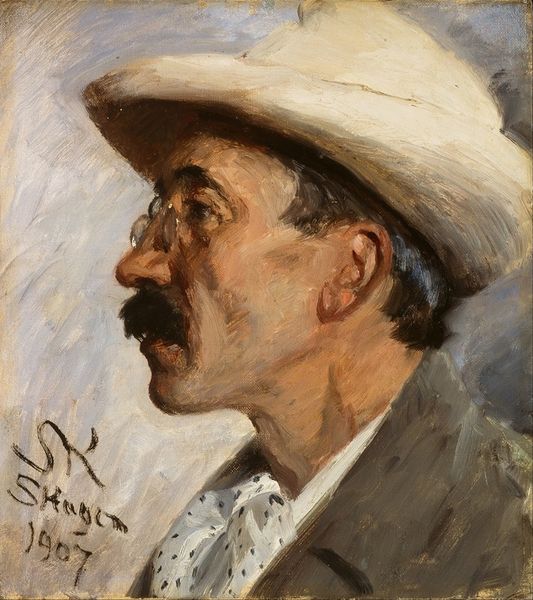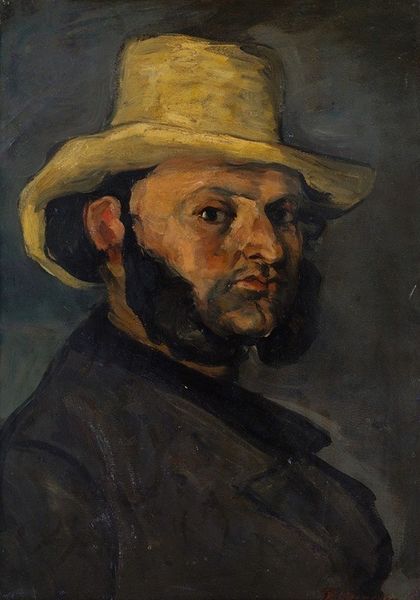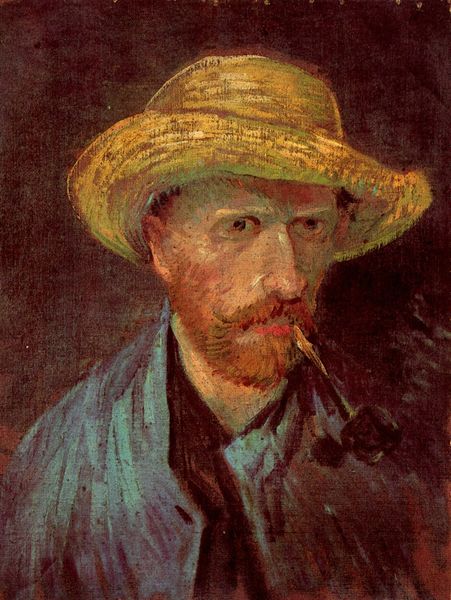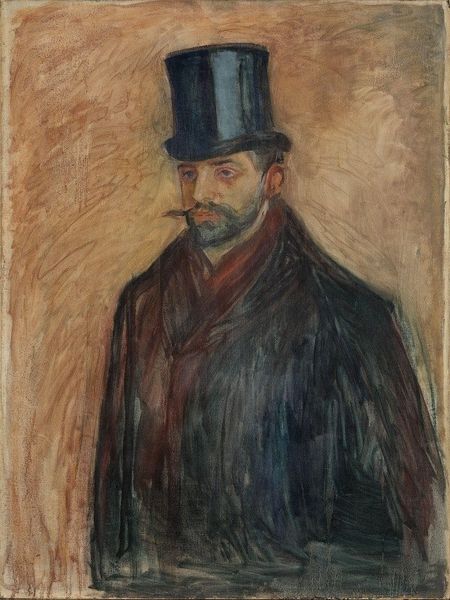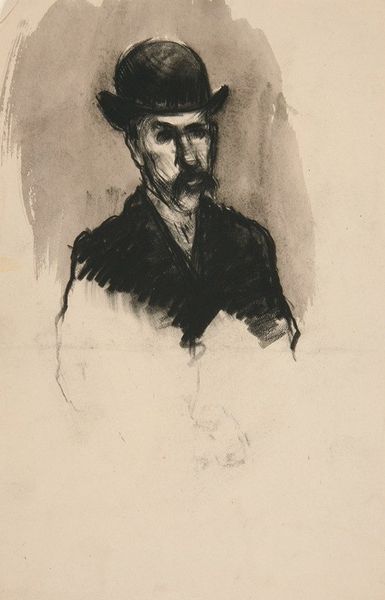
Man with a Pipe (Study for The Card Players) 1892
0:00
0:00
paulcezanne
Nelson-Atkins Museum of Art, Kansas City, MO, US
painting, oil-paint
#
portrait
#
painting
#
oil-paint
#
oil painting
#
portrait reference
#
post-impressionism
#
realism
Copyright: Public domain
Paul Cézanne’s “Man with a Pipe,” now hanging in the Nelson-Atkins Museum, is an oil on canvas study for his famous series, “The Card Players.” This image of a working-class man in southern France invites us to consider the social conditions of artistic production at the end of the 19th century. Cézanne, independently wealthy, could choose his subjects from outside the aristocratic circles favored by the French Academy. Here, the artist elevates the working class to the level of fine art, a somewhat radical gesture at the time. We can also see the influence of French Realism, led by artists such as Gustave Courbet, in Cézanne’s choice of subject matter. The “Man with a Pipe” reflects a broader cultural shift towards representing everyday life rather than idealized or historical scenes. Understanding the context of this painting involves delving into the social and economic transformations of 19th-century France. Art historians consult a range of resources, from exhibition reviews to census records, to illuminate the complex relationship between art and society.
Comments
No comments
Be the first to comment and join the conversation on the ultimate creative platform.
